Inside the studio of Nicholas Kontaxis
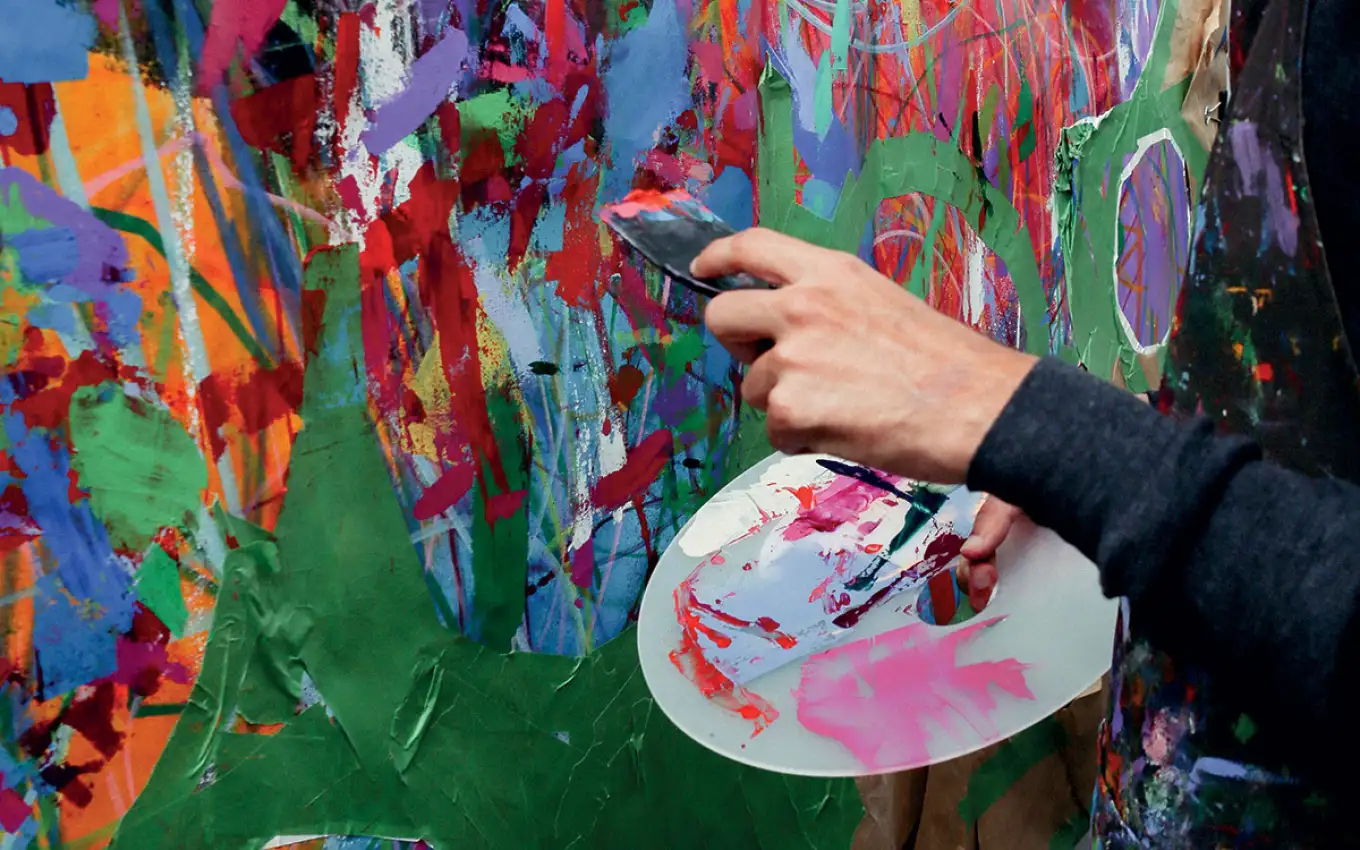
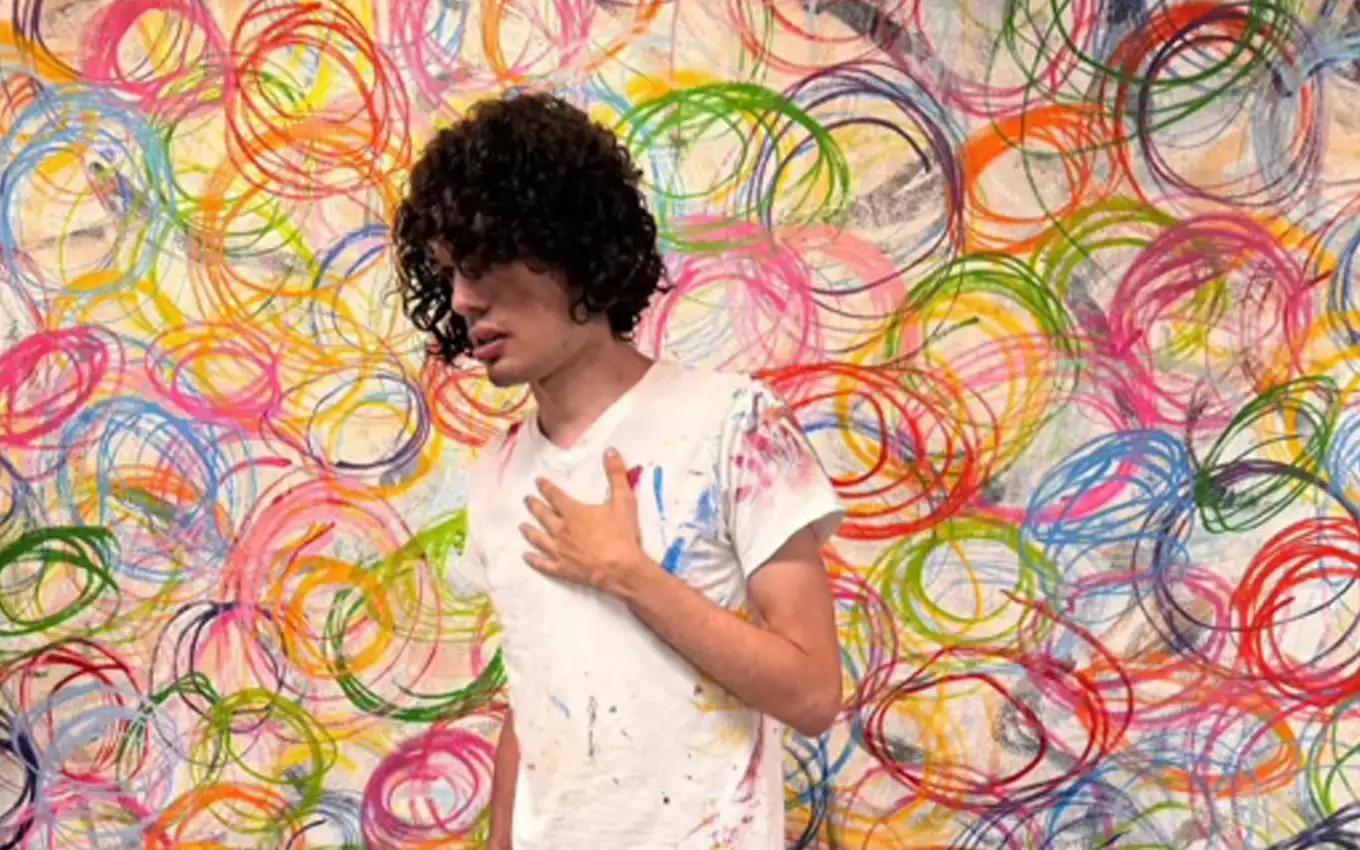
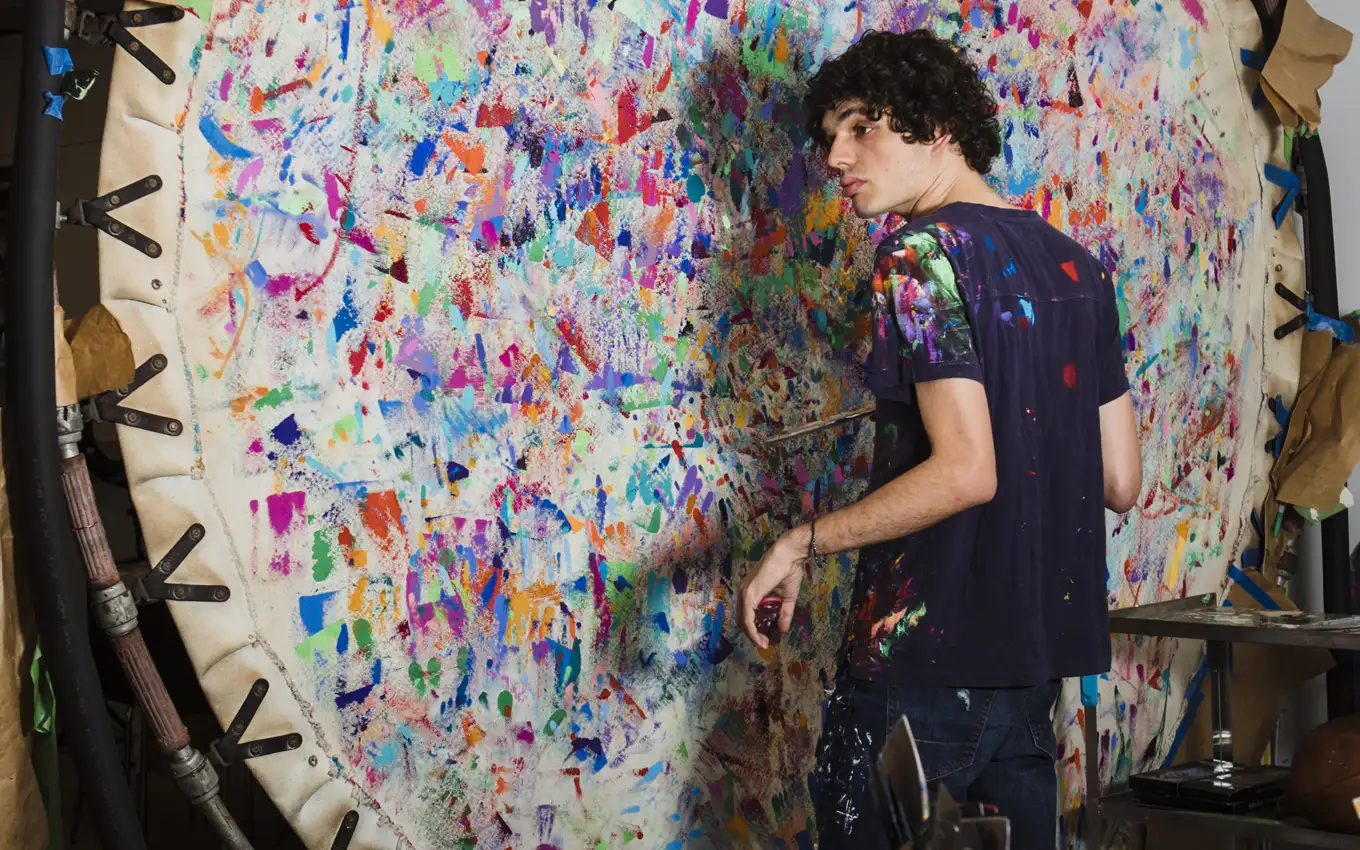
In anticipation of Nicholas Kontaxis’ solo exhibition in Spring 2025 at the Basil & Elise Goulandris Museum in Athens, journalist and critic Daniel Penny sat down with Nicholas’s mother, Krisann Kontaxis, to discuss his practice. A vital collaborator in Nicholas’ practice and frequent presence in his studio, Krisann discusses how she built a supportive environment for his art-making and the challenges and joys of helping Nicholas achieve his vision.
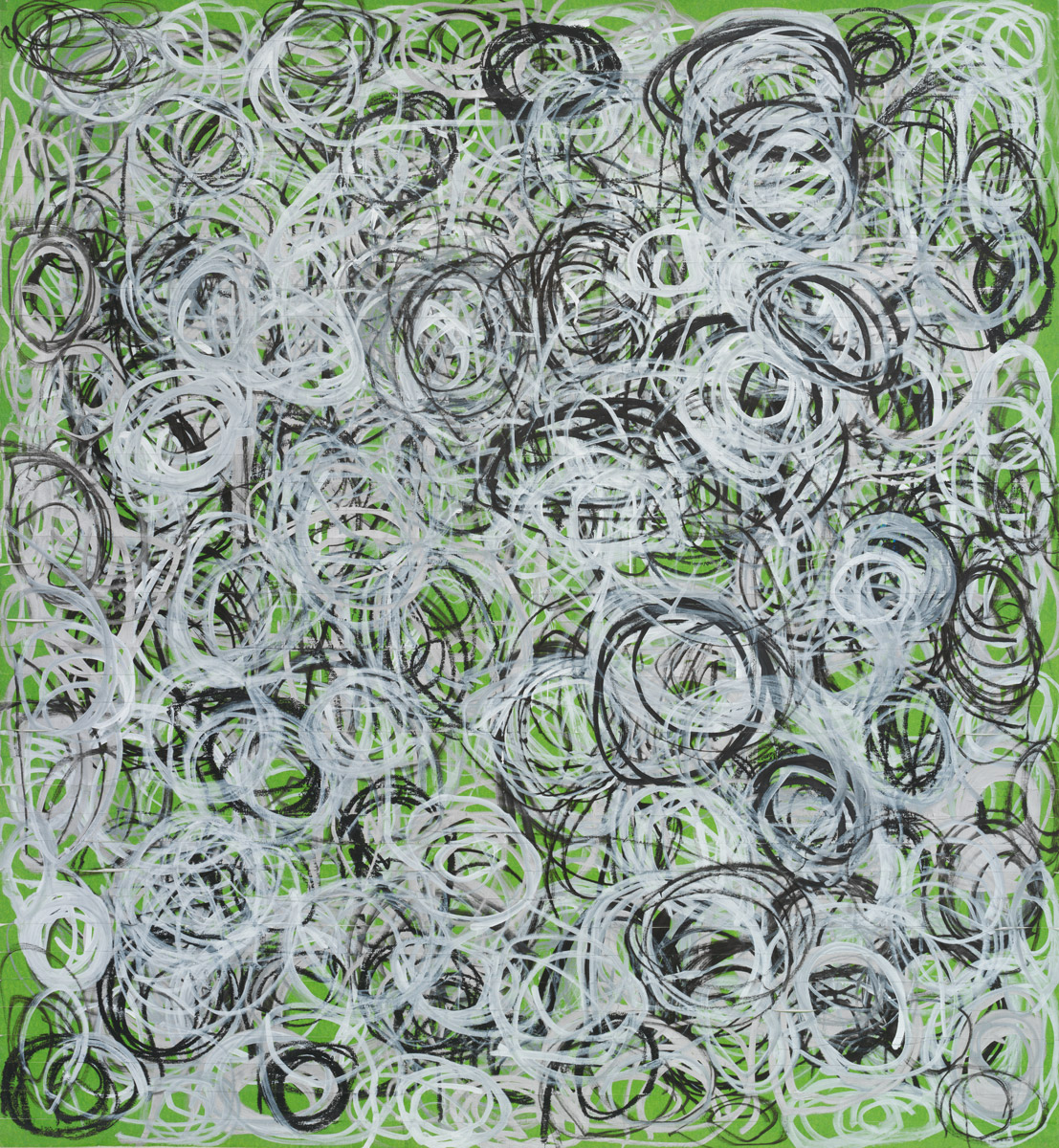
Nicholas Kontaxis (b. 1996), Take Me With You, 2022. Acrylic on tape on canvas.
56 1/8 x 52 1/8 inches. (57 5/8 x 53 5/8 inches framed).
Daniel Penny
So, he’s working out a particular visual idea or motif and he may do many variations on that for a while and then a new idea will form and that will kind of kick off a new series? And there’s often an element of chance or discovery, correct? As in the case of his ash painting. What led Nicholas to start experimenting with ash?
Krisann Kontaxis
During the COVID lockdowns, we were building a lot of fires at our home in the desert which of course led to the accumulation of a lot of ash in the fireplace. As we were taking them out to the garbage we would stop in the studio. This chance encounter gave Nick the opportunity to use some of those ashes to make markings on the safety net in “Catch Me” and is an example of how whatever material is at hand informs his practice.
Another experimentation was with his use of spices to prep canvases. It started with cardamom and cinnamon but this then led to further exploration with ginger, coffee, vanilla, and event dirt. He often adds water to those and mixes them around, some get darker and some lighter. It’s very earthy and grounded and true to Nicholas’ inner approach.
DP
Tell me about a typical day in the studio for Nicholas.
KK
Nicholas’ work pattern in the studio is in a constant state of flux, primarily related to how he manages his seizures. Typically, there are four or five canvases in various stages of completion, and he shifts between them depending on his physical state and their accessibility at any given moment. Organically, each painting often informs the next.
A simple example illustrates this process. One easily accessible style involves metal pizza plates loaded with paint, which Nicholas can manipulate using a variety of palette knives (with different grip sizes, weights, and blade sizes). This approach informed a certain style. The circles in his work emerged from experimenting with pen applicators, which he initially used on days when maneuvering the metal plates and knives was difficult. The dot pulls developed organically when, impacted by epilepsy, he worked directly from paint tubes as he was unable to mix paint.
Interestingly, Nicholas’ practice is often—and delightfully—informed by his limitations. While most artists lean towards their strengths, thinking, “I’m good at this” or “I’m good at that,” Nicholas takes the opposite approach. It’s what he cannot do that shapes his practice and opens up his unique approach to expressing all that is suppressed by these physical challenges.
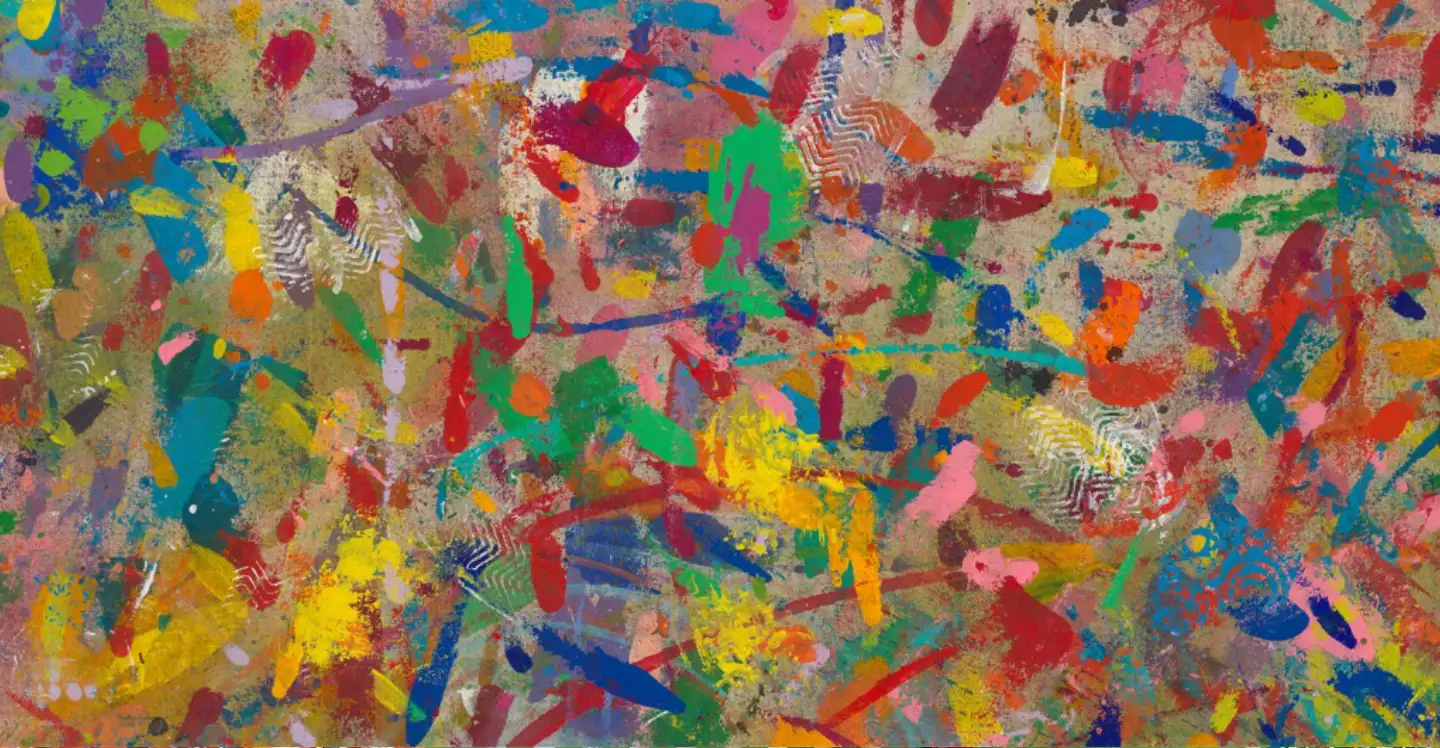
Detail of shoe prints on Get the Magnet, painted in 2019. Acrylic on canvas. 42 x 89 inches.
Sometimes Nicholas arrives at new ideas by accident, like when his brother inadvertently drove over one of his canvases drying on the driveway next to the studio. It was left with a set of tire tracks. One might think that the painting was damaged and ruined after a car ran over it, but for Nicholas, the tire tracks were integrated into his artwork, sparking inspiration for incorporating more wheels and smaller tires as paint applicators. Nicholas frequently walks on top of his paintings and canvases. This then informed the use of shoe prints as a design element and even inspired his commissioned work for Adidas.
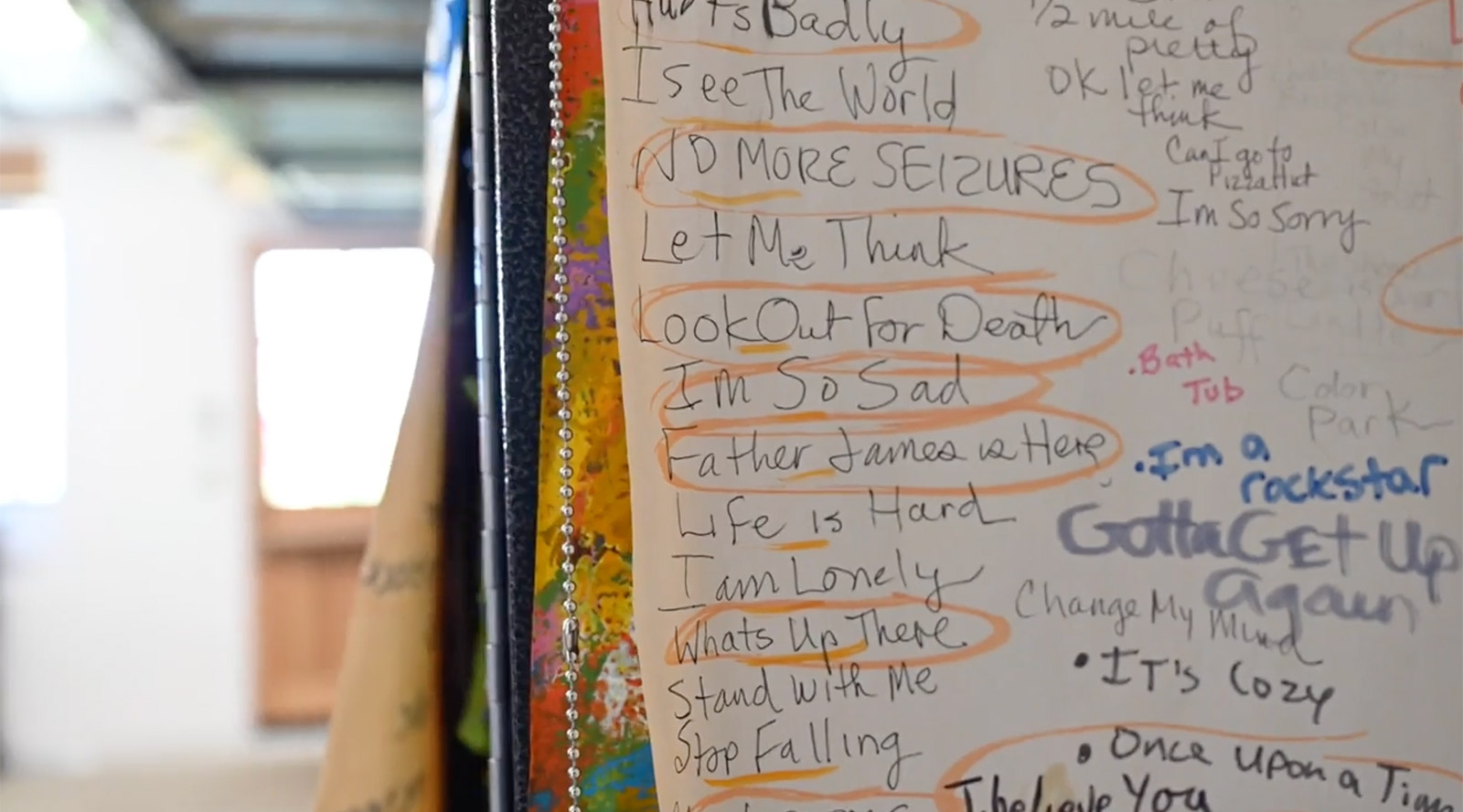
Back of a painting by Nicholas Kontaxis depicting the titling process for his artworks with various phrases recorded by his mother, Krisann.
DP
How do you arrive at titles for the paintings?
KK
You know, he does say a lot. Phrases and utterances come like the seizures do. So when the brain is open, there’s going to be more phrases that come. We’ve been recording them on tape on the wall, because not every painting could be named all those names that he says when he’s working on it. And then one is picked for the painting’s name.
DP
How did the title “Catch Me” come about?
KK
In his youth “Catch me” was a phrase that Nicholas would say prior to a seizure. We were always catching him. He once broke his arm, chipped his tooth–we can’t always catch him perfectly, but we try to. They say for every year of uncontrollable epilepsy, patients lose five years of life expectancy. He’s had this condition since 15 months old. So he probably shouldn’t be here right now; he’s outliving the statistics.
He has always had a support system at school and home — someone there to “catch him”. He could not go to school by himself because it was a danger. He had to have an aide. Those aides have morphed into his assistants for art. They know every one of his paints, work patterns, not to mention his medical needs. Between his family, his aides, and his church community there is always someone there to catch him.
Art has proven to have gotten him through some amazing hardships. And it always just keeps ebbing and flowing around whatever is going on with him.

Nicholas Kontaxis on the floor painting straight from the tubes using a dot pull technique and grid system.
He works in different positions because of his illness. And I think that is something that’s super intrinsic to his practice. Even when he has a lot of seizures, he’s not going to stop painting. He will paint on the floor, then. If he’s having twitches, he might be sitting in a chair. Even if his mind is having a lot of electrical activity, the beauty of this to me is that the markings can still happen. And some of his most beautiful paintings are at those times.

Nicholas Kontaxis next to the Browder safety net entitled “Catch Me”, painted with acrylic and ash for the June 2022 Catch Me exhibition at UTA Artist Space, Los Angeles.
DP
The focal point in the exhibition is a found sculpture covered in small marks by Nicholas. It’s called a Browder safety net. What’s the backstory behind this incredible work of art?
KK
I first saw the Browder Life Safety Net in the corner of a salvage shop in Los Angeles. The Browder Life Safety Net, invented in the 1800s and used until the 1980s, is a type of rescue equipment formerly used by firefighters. It allowed people on upper floors of burning buildings to jump to safety, usually to ground level. I knew this was meant for Nicholas to paint as an ode to those who had been “caught” from fiery buildings and an ode to those who have” caught” him from the constant falls of intractable epilepsy. The correlation was undeniable.
DP
Is there one piece in the show that is particularly special to you?
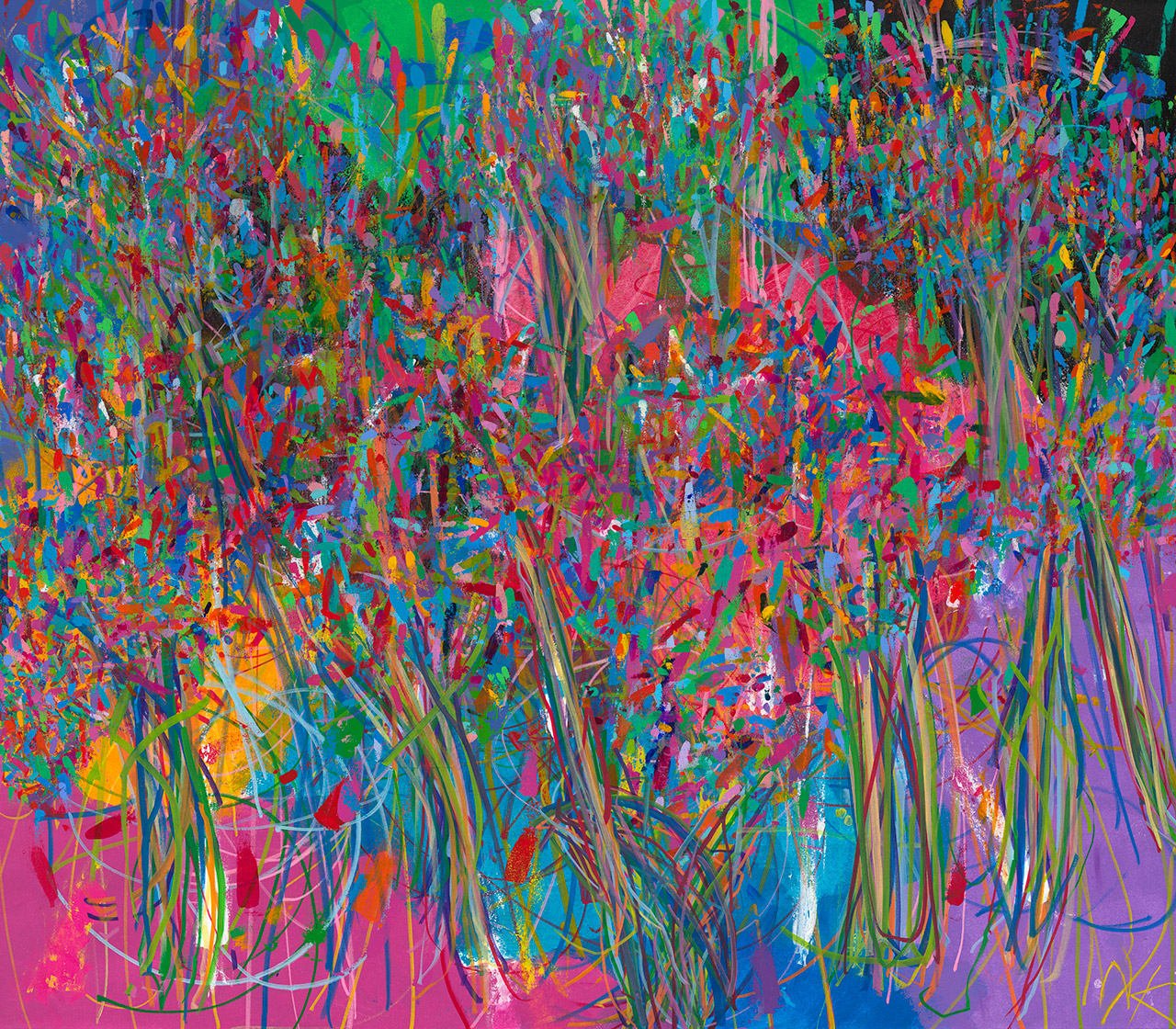
Nicholas Kontaxis (b. 1996), I am Lonely, 2021. Acrylic on canvas.75 x 65 1/2 in (190.5 x 166.4 cm).
KK
“I Am Lonely.” It was one of his first forays using long house painting rollers to merge different colors together in lines, the lines then descended. While he was working on it, he had a serious brain surgery for epilepsy. And it was a five day hospitalization in which he was restrained, because if he touched his head, there was a risk of infection. It was terribly hard. So when he got back to the studio, all he wanted was to paint but he was weak. We thought maybe he could continue working on “I Am Lonely”. He lightly grabbed a tiny tube and did a delicate dot. We were like, oh my gosh, look how small he is doing it. He did that for two straight weeks. That was like his convalescence. He may be down but not out. Like a boxer, he’s gonna get back up, and he’s going to keep going. That’s Nicholas. That’s his practice.
